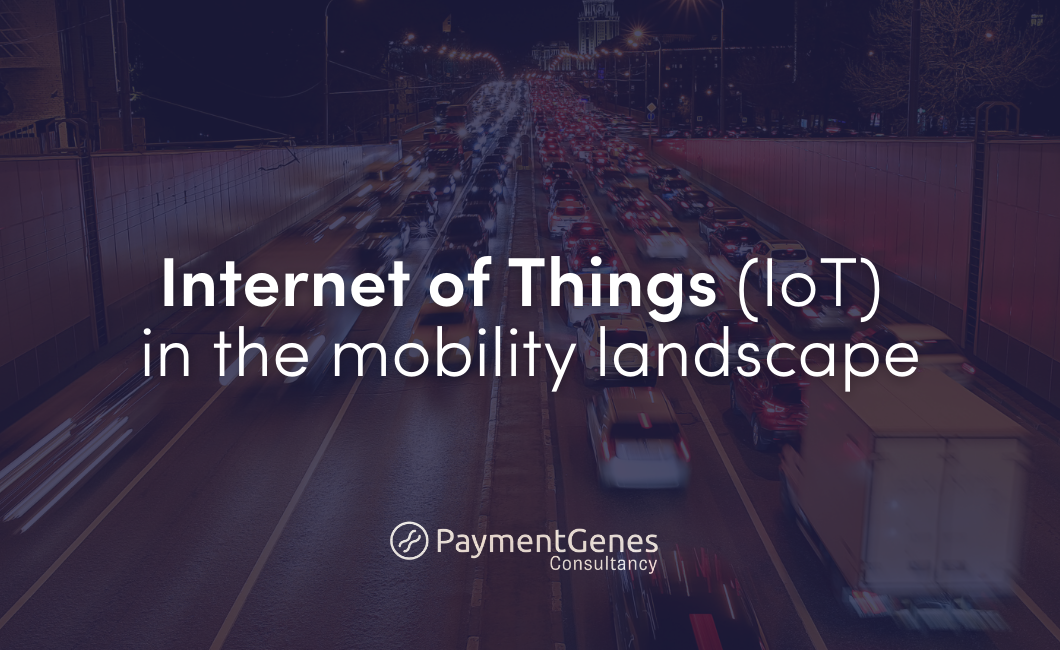In today's rapidly evolving digital landscape, the Internet of Things (IoT) is emerging as a transformative force, poised to redefine how transactions are conducted, particularly in the realm of mobility. Imagine a world where machines initiate transactions seamlessly, where connected devices orchestrate payments autonomously, and where smart cities leverage IoT to optimize transportation systems. This article delves into the profound impact of IoT on mobility transactions, exploring practical applications, benefits, challenges, and the path forward to fully harness this transformative technology.

At its core, IoT refers to a network of devices embedded with sensors, software, and connectivity that enable them to collect and exchange data over the Internet. While the concept often conjures images of smart home appliances like refrigerators that order groceries, IoT's potential extends far beyond domestic settings. In the context of mobility, IoT empowers vehicles, infrastructure, and wearable devices to become transaction enablers, capable of initiating and processing payments seamlessly.
Consider the modern connected car, equipped with GPS navigation, telematics systems, and in-vehicle sensors. Beyond facilitating navigation, these IoT-enabled vehicles can autonomously transact at toll booths, pay for parking, or even engage in peer-to-peer transactions with other vehicles or roadside infrastructure. This fusion of transportation and financial technology represents a paradigm shift in how mobility services are accessed and monetized.

“Traditional payment devices like POS terminals are just the tip of the iceberg. With 15 billion connected devices and counting, the scope for MaIT is expanding exponentially, encompassing vehicles, appliances, and more.”

To grasp the tangible impact of IoT on mobility transactions, let's explore three practical use cases currently revolutionizing the industry:
The Plug and Charge system exemplifies the seamless integration of IoT and payments in the EV charging ecosystem. When an electric vehicle plugs into a compatible charging station, IoT-enabled communication between the vehicle and station not only manages the energy transfer but also facilitates secure billing and payment processing. This automated transaction flow ensures accurate billing based on real-time energy consumption, eliminating the need for manual payment processes.
Geolocation ticketing leverages IoT technology to streamline fare collection and enhance user experience in public transportation systems. By utilizing passengers' smartphone GPS data, IoT-enabled ticketing systems automatically calculate and charge fares based on travel distance or zones traversed. This approach not only simplifies fare collection but also minimizes reliance on physical ticketing infrastructure, reducing operational costs and improving efficiency.
IoT plays a pivotal role in road pricing initiatives aimed at managing urban congestion. In cities like Singapore, IoT-powered toll systems use sensors and communication technologies to track vehicle movements and apply dynamic pricing based on traffic conditions. This data-driven approach incentivizes off-peak travel, reduces congestion, and optimizes road infrastructure utilization—a testament to IoT's transformative potential in urban mobility.
The adoption of IoT in mobility transactions offers compelling benefits:
Despite these advantages, IoT-driven transactions pose unique challenges:
To fully capitalize on IoT's potential, we must introduce a new transaction category: Machine-Initiated Transactions (MaIT). These transactions bridge the gap between customer-initiated and merchant-initiated transactions, offering a higher degree of trust and security. Engaging stakeholders across the ecosystem—payment schemes, merchants, acquirers, and PSPs—is crucial to foster dialogue, establish standards, and unleash the full spectrum of MaIT-enabled use cases.
To move from conceptualization to implementation, it's imperative to take tangible steps forward. We propose three actionable calls to action.
To fully unlock the potential of IoT-driven payments in mobility, collaboration and innovation are essential. Industry stakeholders must engage in dialogue to establish standards, initiating targeted pilots and proof-of-concepts will facilitate experimentation and validate IoT payment models in real-world settings.
To explore the realm of Machine-Initiated Transactions (MaIT) and IoT-driven payments further, join us in initiating dialogue, facilitating standards, and embarking on targeted pilots and proof-of-concepts.
Feel free to reach our Co-Head of Consultancy, Bas Van Donselaar, at Bas@paymentgenes.com

The European fleet and mobility industry is undergoing a major shift driven by the rise of electric vehicles (EVs), sustainability goals, and the need for seamless payment solutions. However, fragmented payment systems remain a key challenge, making it difficult for businesses and consumers to manage fuel and EV charging transactions efficiently. The industry is moving away from closed-loop systems towards open-loop payment solutions that offer broader acceptance and interoperability. This transformation requires collaboration across stakeholders, alignment with industry standards, and innovative technology solutions. As digitalization accelerates, businesses must adopt future-proof payment strategies to remain competitive in the evolving mobility landscape.